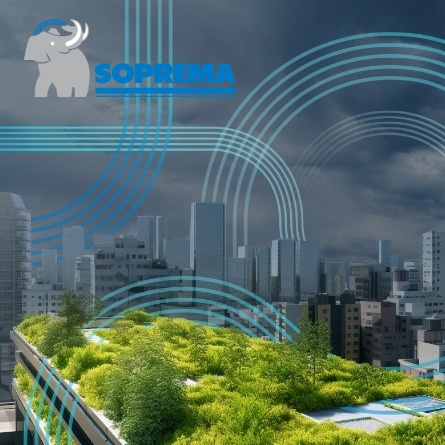Floods and heat waves—increased tenfold by global climate change—require reinventing the way we design buildings. The importance of better stormwater management practices is increasingly recognized by our institutions, which are adopting new regulations in this area.
Several solutions are available to cities, but what solutions can designers incorporate to make cities more resilient to climate change?
Our SKYWATER Solutions
Our SKYWATER systems have been designed to meet the normative requirements and environmental challenges of the North American climate.
Less and Less Permeable Cities
Rising urbanization and city densification have led to a continuous reduction in permeable surfaces, which disrupts the regulation of rainwater in urban areas. Impervious surfaces, such as roads, parking lots and roofs, cause the accumulation of large amounts of water that cannot be naturally absorbed by the ground.
More and More Extreme Weather
Climate change causes an intensification of rain episodes and a considerable increase in its frequency. The infrastructure in place to manage stormwater runoff is under more pressure than ever before.
Consequences
- Flood risks are worsening—Floods have increased by 300% in Canada since the 1960s.
- Increased pressure on municipal water management systems (sewers) generates additional costs for the community and individuals.
- The discharge of untreated water into the environment creates river pollution and a risk to biodiversity.
Solutions: Green, Blue, and Hybrid Roofs
Three Key Actions
Retention
Rainfall retention, effective for common rainfall, consists of intercepting rainwater where it falls, directly on the roof, thanks to green (vegetated) roofing. The substrate and the plants absorb and evaporate water naturally. Result: no discharge into sewage networks.
Regulate
It is possible to regulate the flow of rain to the networks thanks to temporary detention systems which make it possible to gradually discharge rainwater.
Cool down
Roof vegetated systems, thanks to the evapotranspiration of plants and the shade they provide, create small thermal oases. They therefore contribute to reducing the effects of heat islands by participating in climate regulation.
Read More: Discover Our Stormwater Management Solutions – Making Our Cities More Resilient with SKYWATER®
 Greenroofs.comConnecting the Planet + Living Architecture
Greenroofs.comConnecting the Planet + Living Architecture




